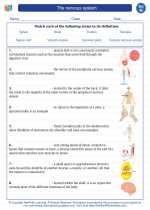Cardiovascular System
The cardiovascular system, also known as the circulatory system, is a network of organs and vessels that is responsible for the transport of blood, nutrients, and oxygen throughout the body. It consists of the heart, blood vessels, and blood.
Functions of the Cardiovascular System
- Transportation: The cardiovascular system transports oxygen, nutrients, hormones, and waste products to and from the cells of the body.
- Regulation: It helps regulate body temperature, pH levels, and water balance.
- Protection: The system plays a key role in the immune response and clotting to prevent blood loss.
Components of the Cardiovascular System
The Heart
The heart is a muscular organ that pumps blood throughout the body. It consists of four chambers: the left and right atria, and the left and right ventricles.
Blood Vessels
There are three main types of blood vessels: arteries, veins, and capillaries. Arteries carry oxygenated blood away from the heart, veins carry deoxygenated blood back to the heart, and capillaries are tiny blood vessels where oxygen and nutrients are exchanged with tissues.
Blood
Blood is a fluid connective tissue that carries oxygen, nutrients, hormones, and waste products throughout the body. It consists of red blood cells, white blood cells, platelets, and plasma.
Study Guide
To study the cardiovascular system, it's important to understand the structure and function of the heart, blood vessels, and blood. Here are some key topics to focus on:
- Structure of the heart and its chambers
- Path of blood flow through the heart
- Types and functions of blood vessels
- Composition of blood and its functions
- Cardiovascular diseases and their prevention
Additionally, understanding the cardiac cycle, blood pressure regulation, and the relationship between the cardiovascular system and other organ systems such as the respiratory and lymphatic systems will provide a comprehensive understanding of this topic.
Studying the cardiovascular system involves learning the anatomy, physiology, and various disorders associated with the system. Utilizing visual aids such as diagrams and interactive models can also help in understanding the complex network of the cardiovascular system.
By mastering the concepts related to the cardiovascular system, you'll gain a deeper understanding of how the body's transport and regulatory systems work, and how they are essential for overall health and well-being.
.◂Science Worksheets and Study Guides Eighth Grade. The nervous system

 Worksheet/Answer key
Worksheet/Answer key
 Worksheet/Answer key
Worksheet/Answer key
 Worksheet/Answer key
Worksheet/Answer key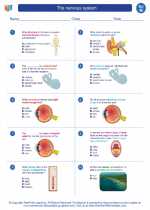
 Vocabulary/Answer key
Vocabulary/Answer key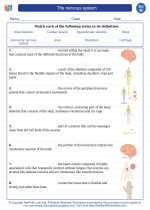
 Vocabulary/Answer key
Vocabulary/Answer key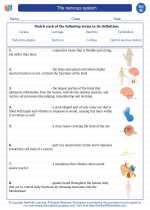
 Vocabulary/Answer key
Vocabulary/Answer key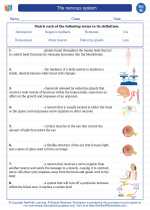
 Vocabulary/Answer key
Vocabulary/Answer key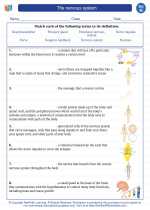
 Vocabulary/Answer key
Vocabulary/Answer key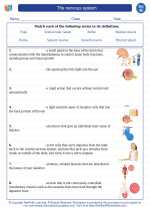
 Vocabulary/Answer key
Vocabulary/Answer key